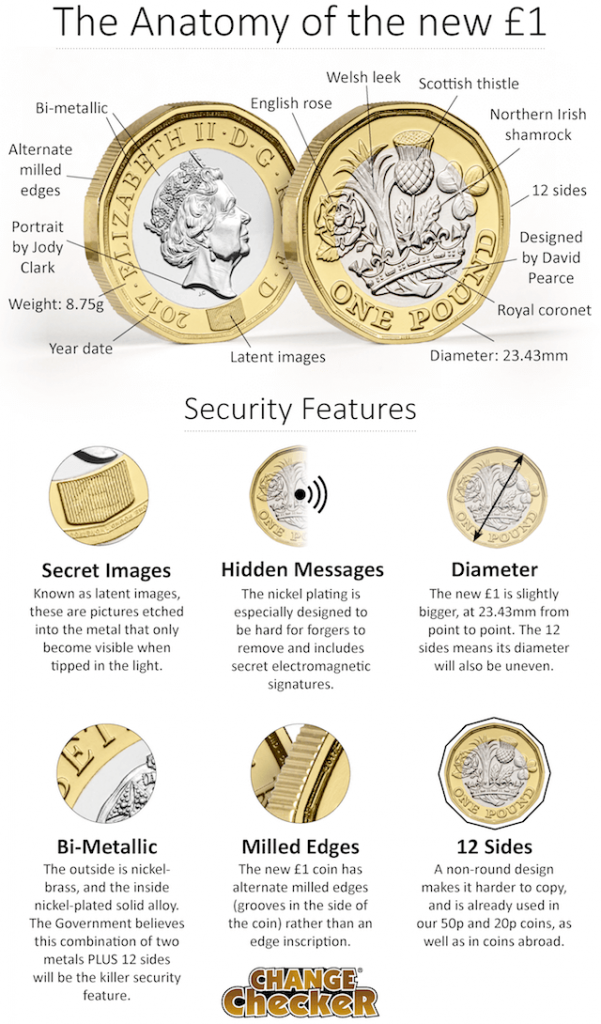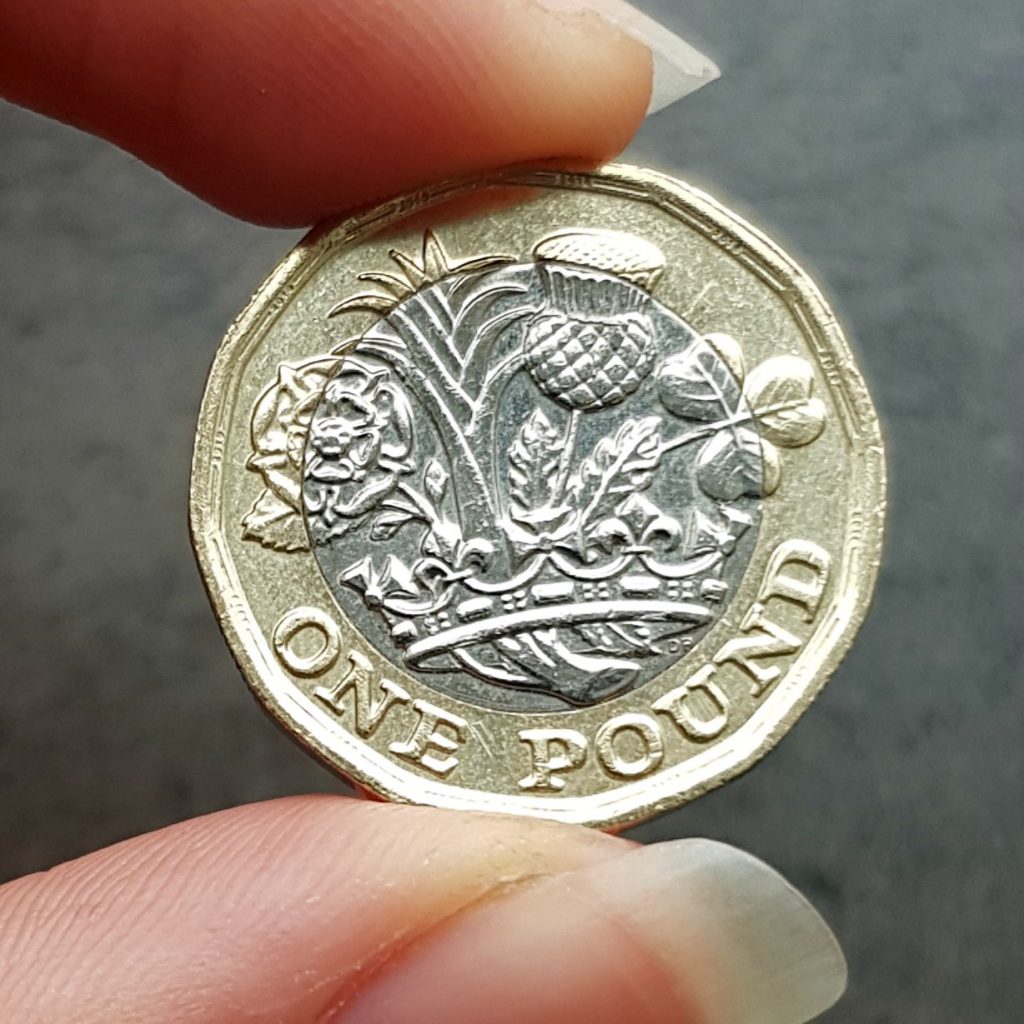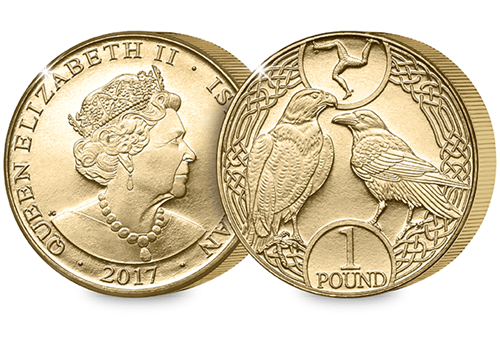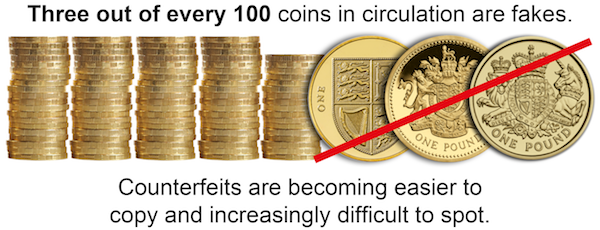Posts Tagged ‘counterfeit coins’
The UK’s 12 sided £1 goes global!
Yesterday the Treasury announced that the UK’s 12 sided £1 coin would be going global, as overseas territories and Crown Dependencies will soon be able to create their own bespoke versions of the coin to replace the older £1 currently in circulation.
In 2017, the new Nations of the Crown 12 sided £1 made its UK debut, described by the Government as “the most secure of its kind in the world” due to the new design, featuring intermittent milled edges and micro-engraved denomination and year date which protects against criminals producing counterfeits copies. Before this, around 1 in every 30 round pound coins were in fact fakes.

As many territories and dependencies currently circulate their own version of the older pound coin, they will now be able to protect their currency with this secure cutting edge technology. These coins will be produced by The Royal Mint to the same security standards as our UK coinage to thwart counterfeit activity.
The Nations of the Crown £1 was designed by 15-year-old David Pearce following a public competition in 2015. The design is made up of the English rose, the Welsh leek, the Scottish thistle and the Northern Irish shamrock emerging from one stem within a royal coronet to represent the four constituent countries of the United Kingdom.

The Treasury expects the new versions struck for overseas territories and Crown Dependencies to feature images celebrating their heritage, history and culture to symbolise the close links with the UK.
Jersey, Guernsey and the Isle of Man all represent Crown Dependencies of the UK, whilst the UK overseas territories include Akrotiri and Dhekelia; Anguilla; British Antarctic Territory; Bermuda; British Indian Ocean Territory; British Virgin Islands; Cayman Islands; Falkland Islands; Gibraltar; Montserrat; St Helena and Dependencies (Ascension Island and Tristan da Cunha); Turk and Caicos Islands; Pitcairn Island; and South Georgia and South Sandwich Islands.
Robert Jenrick, Exchequer Secretary to the Treasury, said:“These new designs will reflect the rich and varying British communities across the world.”
Lord Ahmad, the overseas territories minister, said: “As well as helping to boost their identity, these new coins will also bring increased security to each of these economies.”
So Change Checkers from overseas territories and Crown Dependencies can look forward to the new coins being released soon, but what design do you think should be featured for each? Let us know in the comments below.
Is this the last Isle of Man Round Pound?
In 2017 the Isle of Man released this Raven and Falcon Uncirculated £1 Coin and following the Treasury’s update, this could now be the very last Isle of Man Round Pound!
Could you spot a fake £1 coin?
One Pound coins were first issued in 1983, but one in every thirty £1 coins is now a fake. These forgeries cost the Government £2million every year.
Counterfeits £1 coins are becoming easier to copy and harder to spot which is why The Royal Mint have decided to issue a brand new 12-sided £1 coin which is billed to become the most secure circulating coin in the world.
The new 12-sided £1 coin will be an ultra-secure replacement which will be harder for forgers to copy. They will also last 5 years longer than the current round pound coins.
The figure of counterfeit coins has more than doubled in the past decade, and shockingly now three out of every 100 coins in circulation are fakes.
Counterfeits are becoming a closer match to the real thing, making it increasingly difficult for consumers to spot the difference. Usually, the only way you would notice a fake is if it were rejected from a vending or ticket machine.
The majority of coins are stamped out, which involves pressing a piece of metal against a specially cut die. However they can differ from the genuine article in many ways.
Here are a few tell-tale signs to look out for;
Appearance
The coin has been circulating for a long time according to its date of issue, yet it appears surprisingly new. Genuine pound coins lose their lustre when they have been in circulation for a number of years. Also fake coins tend to be more yellow or golden than the real thing.
Design
The design on the reverse doesn’t match the official design for the year it was issued – you can find all these designs on the Change Checker website. The first was introduced in 1983 and the reverse design has changed every year since.
Edge lettering
The lettering or inscription on the edge of a genuine £1 coin must correspond with the year date. Often the milled edge on counterfeits isn’t well defined and the lettering is uneven, badly spaced or indistinct.
Alignment
Hold the coin so that the Queen’s head is upright and facing you – the design on the reverse side should also be upright and not at an angle.
Unlike notes, coins are not usually banked, but instead circulate between the till and the customer’s pocket and back again which makes them more difficult to remove from circulation. The probability is that you have already used a counterfeit £1 coin as payment for something without realising, such is the quality of the fakes.
Remember, a fake £1 coin is not only absolutely worthless but it’s also illegal to pass it on to anyone else.
All the more reason to be regularly checking your change…



